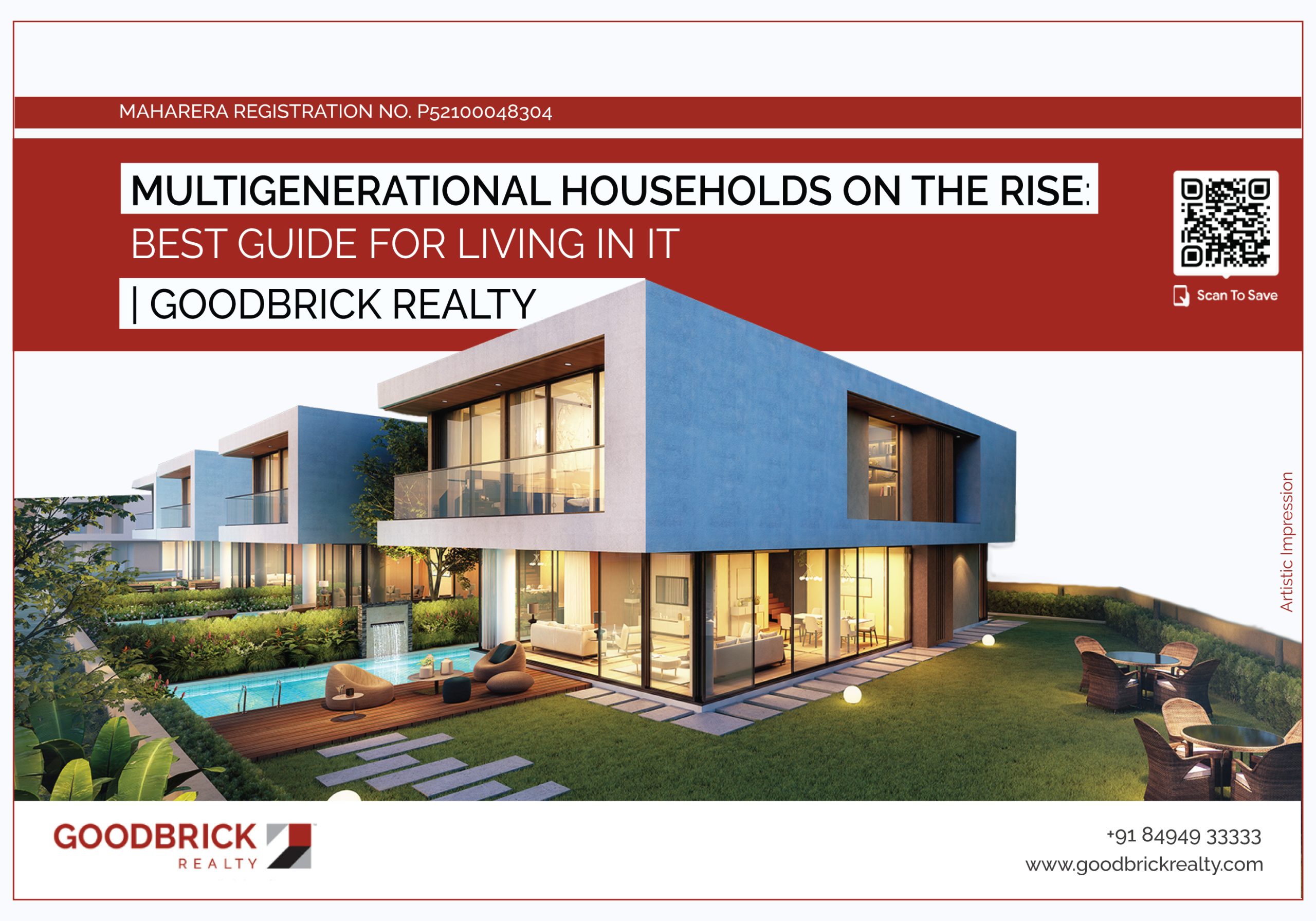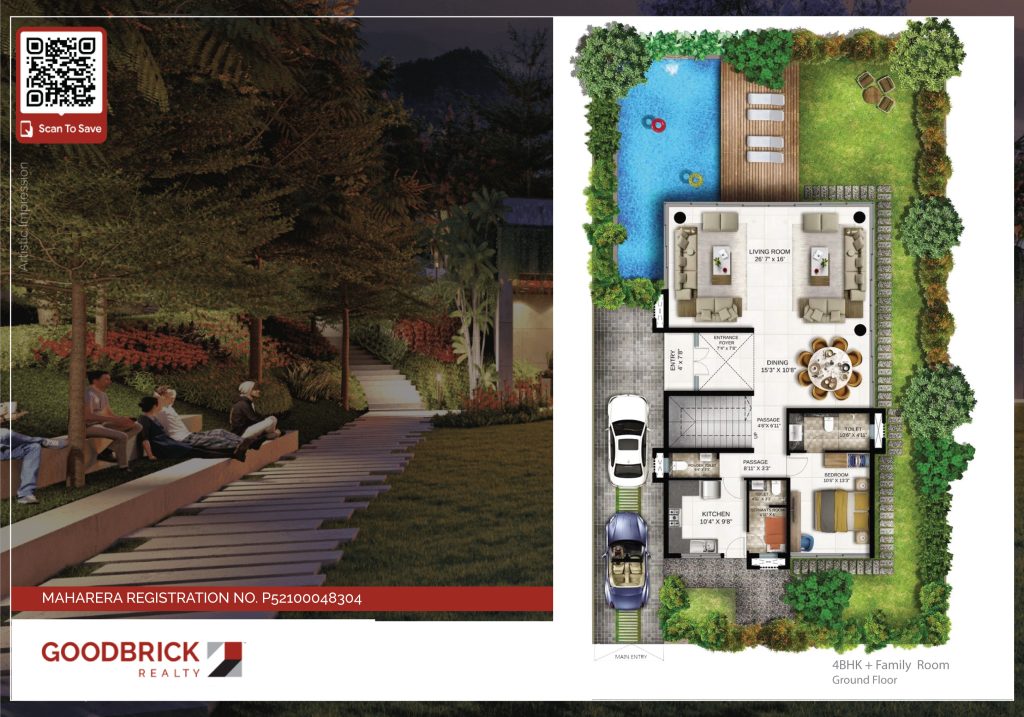
In a rapidly evolving world, societal structures often witness transformations that reflect changing values, economic dynamics, and cultural shifts. One such evolving trend in India is the rise of multi-generational households. This traditional concept, which had taken a backseat due to modernization and urbanization, is making a resounding comeback. In this article, we delve into the reasons behind the resurgence of multi generational households, their benefits, drawbacks, and offer insightful tips for harmonious coexistence in such arrangements.
Multigenerational living is a practice rooted in India’s culture and heritage, where extended families living together under the same roof was the norm. However, the rise of nuclear families and urbanization led to a decline in this practice. In recent years, several factors have sparked a renewed interest in multigenerational households.
The soaring costs of real estate and living expenses have pushed families to explore cost-effective housing solutions. Sharing the financial burden of housing, utilities, and other expenses across multiple generations can provide substantial relief. Families are finding that pooling resources makes owning large homes like Villa In Khandala or spacious 3 BHK flats in places like Nashik Gangapur Road more feasible, which aligns with Indian preferences for larger living spaces.
India’s aging population and the traditional emphasis on caring for elders have led to an increased desire to keep aging parents or grandparents close. Multigenerational households offer a supportive environment for the elderly, ensuring their needs are met while maintaining the family’s cultural and emotional bonds.
Modern lifestyles often demand an extensive amount of time and energy, leaving little room for maintaining a work-life balance. Multigenerational households provide a natural support system where responsibilities can be shared, from childcare to household chores, allowing working parents to find some respite.
Living under one roof fosters stronger intergenerational relationships, enabling the transfer of wisdom, values, and traditions across generations. The sense of unity and mutual support can create a nurturing environment that promotes emotional well-being.
Living in a multigenerational house can be a rewarding and fulfilling experience, but it also comes with its challenges. The key is to create a harmonious environment where everyone’s needs and boundaries are respected. Here are some tips to help you navigate life in a multigenerational household:
Designate specific areas for each generation to have their personal space and privacy. At the same time, create common areas where family members can come together to socialize, share meals, and bond.
Respect is crucial in a multigenerational household. Recognize that different generations might have varying schedules, preferences, and lifestyles. Make an effort to be mindful of each other’s needs and boundaries.
Effective communication prevents misunderstandings and confrontations. Regularly discuss expectations, responsibilities, and any concerns. Encourage open dialogue among family members to address issues before they escalate.
If the household includes caregivers looking after the elderly or young children, it’s important to ensure they have time to rest and recharge. Arrange for periods when other family members can take over caregiving responsibilities, allowing the primary caregivers to take a break.
Organize activities that bring different generations together, such as game nights, cooking sessions, storytelling, or gardening. These shared experiences can foster a sense of unity and help build strong relationships among family members.
Remember, each multigenerational household is unique, and what works for one might not work for another. Flexibility, empathy, and a willingness to adapt are key to maintaining a harmonious and enjoyable living arrangement for everyone involved.
Multigenerational households bring numerous advantages:
While multigenerational households have their merits, challenges can arise:

Selecting the right floor plan is pivotal for harmonious living. Homes like villas or spacious 3 BHK flats on Nashik Gangapur Road offer the space needed for multigenerational households, ensuring everyone’s comfort and privacy.
Choosing a floor plan for your multigenerational home is an important decision. You need to consider the needs of all the people who will be living there, as well as the size and layout of your property.
Here are some factors to keep in mind when choosing a floor plan:
The resurgence of multigenerational households in India signifies a return to traditions that emphasize the importance of family bonds and shared values. While challenges exist, open communication and a willingness to adapt can make multigenerational living a fulfilling experience. Large homes, such as villas or 3 BHK Flat In Nashik Gangapur Road, play a vital role in accommodating multiple generations under one roof while ensuring comfort and convenience for everyone involved.
As India witnesses the revival of multigenerational households, it’s clear that this trend aligns with the cultural fabric of the nation. The benefits of financial savings, enhanced elderly care, and strengthened family bonds make multigenerational living an attractive option. By acknowledging the drawbacks and following the provided tips, families can create a harmonious environment that supports and nurtures every generation.
If you are looking for a reliable and trustworthy real estate developer in Navi Mumbai, Goodbrick Realty is the best option to consider.